On most January Sunday afternoons, I would ordinarily be poking holes in lake ice for the purpose of fish extraction, but in this iceless winter I’m poking around the internet for some historical lake ice data. Duration of lake ice cover is a good climate change indicator because the high specific heat of water (the amount of energy necessary to change the temperature of a substance) makes it less responsive to anomalous atmospheric events and more indicative of overall change. It takes about 4 times as much energy to raise the temperature of water as it does an equal mass of air.
There is a long and reliable ice cover data base for some lakes in our region and Lake Mendota (Wisconsin) and West Lake Okoboji (Iowa) are two. Both are at 43o N latitude. The Lake Mendota record has been used in several published scientific papers. I did my own analysis of that data today for the period 1900 to 2022 and it appears to me that seasonal lake ice duration has declined about 17 days during that time, with the change evenly distributed at the beginning (ice forming ~8 days later) and end (ice out ~9 days earlier) of the winter. Most of that 17-day loss of ice occurred during the period of 1980-2008, with not a lot of change before or after that, although the seasonal average has continued to inch downward.
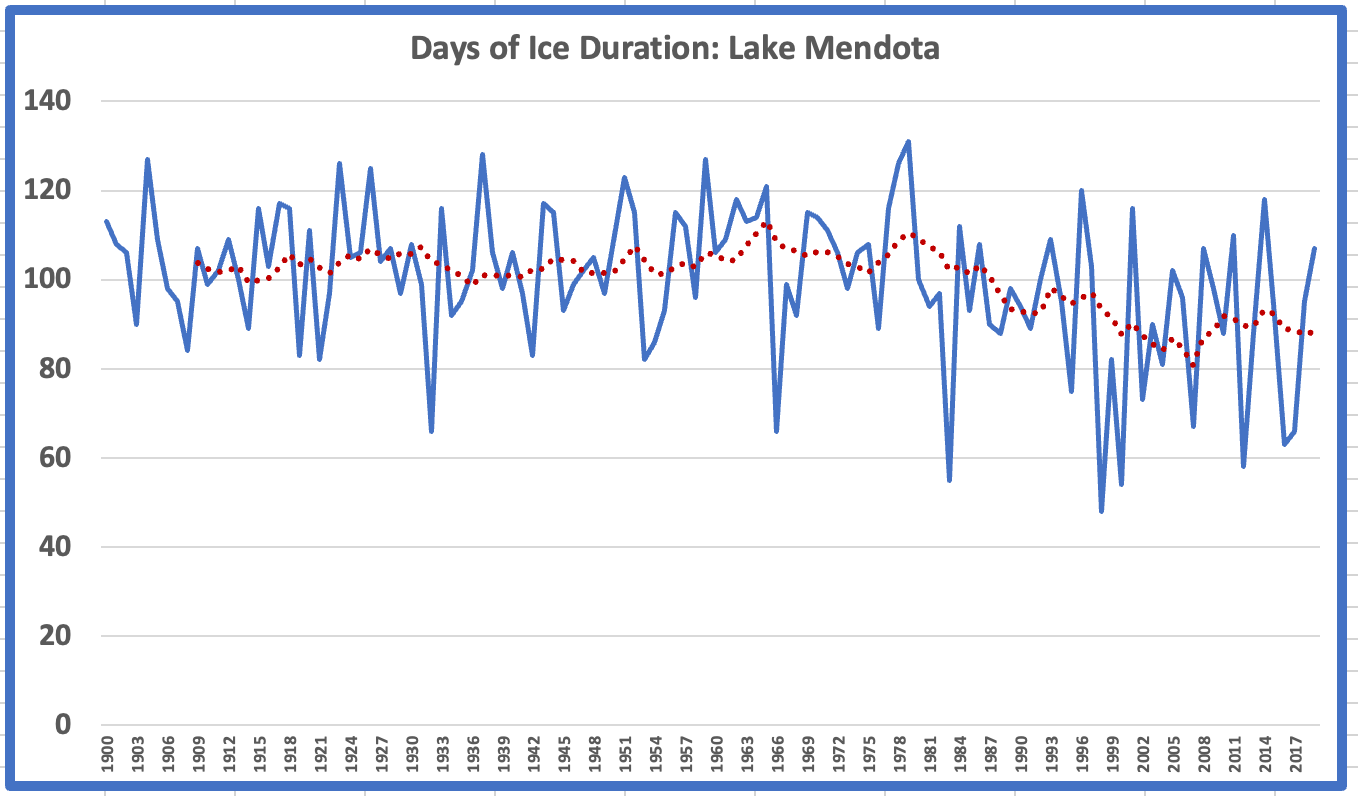
The change at West Okoboji has been much more modest with a decline of 4 ice cover days for the available record of 1916-2008. It seems likely that I could find the more recent years if I looked hard enough, but I thought this was adequate for today. The loss of the four ice days on West O all come at the at the beginning of the season.
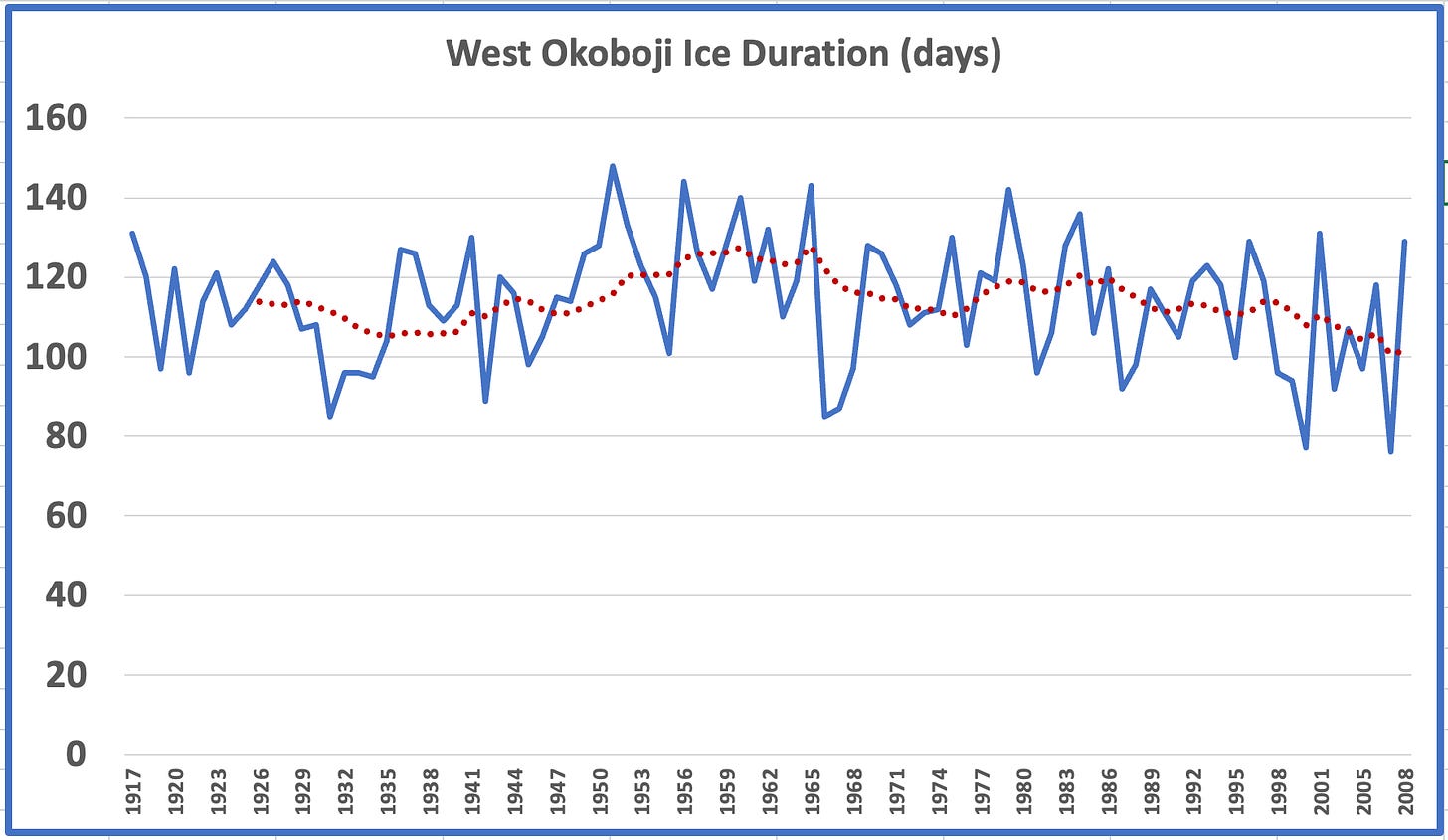
Seasonal ice cover averages 100 (Mendota) and 114 days (W. Okoboji) per year for the examined data records. Mendota has of late seen some freakishly short ice seasons of less than 60 days (1983, 1998, 2000 and 2012) while West Okoboji had only two years with less than 80 days of ice (2000 and 2012) in the examined record. Ice covered Lake Mendota for only 48 days in 1998.
Hard water fishing tends to be best at first ice, probably because the fish have been unmolested for a few weeks and have let their guard down. That’s my theory, anyway. First ice for me and another old-timer who I’ll call Sven used to be the 2nd week of December in northern Crow Wing County, Minnesota, about 375 miles north of where I sit now in Iowa City. This was a trip that had to be planned in advance, and after some bad-ice postponements in the ‘90s, we permanently (we thought) moved the trip to around New Year. Then this year an inch of Christmas rain caused the ice to pull away from the shore and we decided to forgo the ice auger and tip-ups completely and fish for walleye from my boat on the Mississippi River—productive, but not my favorite thing to do this time of year because it’s near-impossible to stay warm in a jon boat floating in 33-degree water. All this makes me wonder if someday people will look wistfully at ice fishing images from days gone by, at least down here at the southern end of ice fishing country.
Cold water fishing with Sven, whether on ice or from a boat, has always been complicated by the timing of his bathroom particulars. He has long favored insulated Carhartt coveralls atop several other layers for ice fishing, the type of outfit not to be casually donned without some level of certainty regarding the current and future state of your bowels. Many an early-morning walleye and crappie bite was missed while the rest of us waited for Mrs. Folgers to punch her way down Sven’s gut. The only thing that compares to this wait is the one spent at a train crossing blocked by a completely stopped mile-long freight, only an agonizingly few boxcars left until pay dirt, and then a rumble as if from a distant thunderstorm starts to reverberate from parts unknown and you realize oh god no this sucker is about to start backing up.
Before the Crow Wing County trips, Sven used to harass the fish an hour to the north of there in Beltrami County, where he lived at the time. Back then, the concern about ice focused not on whether there would be any by December 1st but on whether the lakes would be free of it in time for the spring walleye opener on Mother’s Day weekend (I’m not kidding on that). If someone had generously plowed a road out to a likely fishing spot on his favorite frozen lake, Sven would drive his first generation (1972-78) blue Honda Civic hatchback to the spot, drill a few holes, and watch his set lines from the car.
One particular morning of bitter cold, about -20 or so, Sven headed out in the Civic to fish solo and arrived at his spot unusually early, well before sunrise. He drilled two holes, fished a couple of shiners out of his minnow bucket and then hooked them onto his tip ups, hoping for a walleye. Quickly retreating to the car to thaw his hands made numb by the icy water from the minnow bucket, he then poured a cup of coffee and looked for the Power Loon KLIZ AM 1380 on the car radio (those old Civics only had AM).
A couple of sips of coffee from the thermos caused the intestinal launch sequence to be unexpectedly initiated, and Sven quickly realized the situation was becoming untenable. Seeing an orange glow on the eastern horizon, he knew that others would soon be rolling out to the spot, since dead and disgarded minnows and frozen-over holes from previous days surrounded the Civic. Something had to be done. And quick.
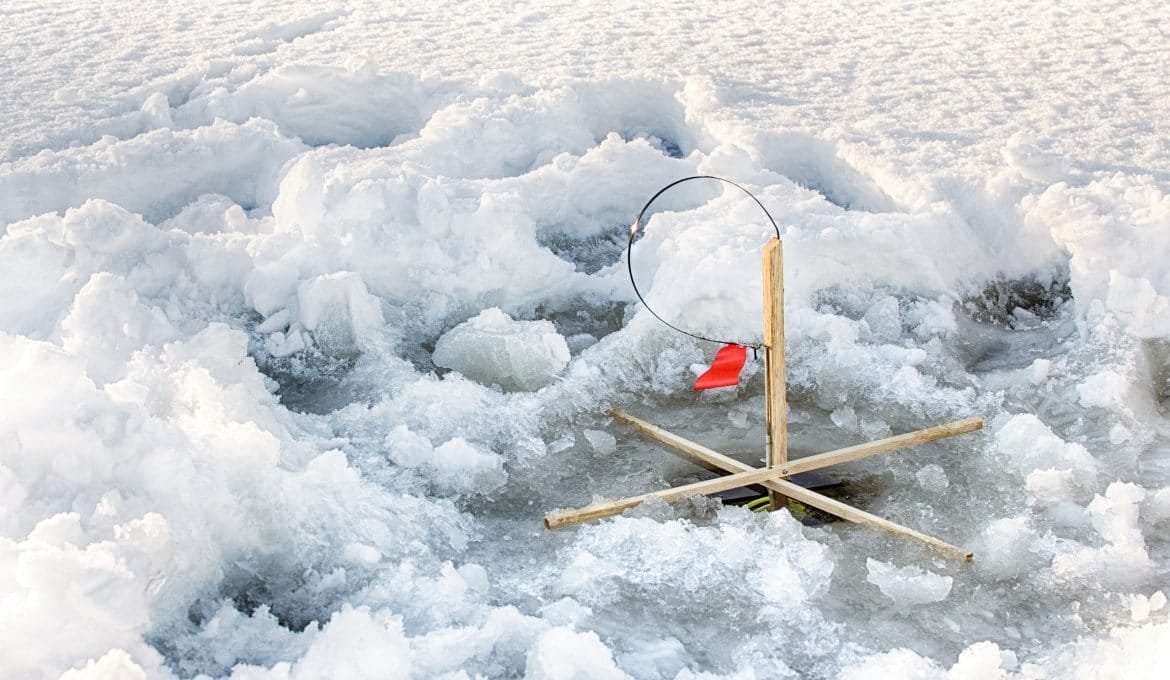
Sven then and forever carried a grain shovel in his vehicle. An idea came upon him that he could step out of the car, de-layer, and make his deposit onto the shovel, whereby he would return to the car and warm up while nature froze his deposit. Then he would carry the prize some distance away to a nearby island where it could be left out-of-sight from the rest of the soon-to-be-arriving anglers.
All went according to plan until it came time to re-cover with the Carhartts, whereupon he slipped on the ice. This seemingly being only a minor setback, he quickly got up, got the Carhartts back on, and jumped into the Civic. Boy, these cloth seat covers Ruth (wife) bought him for Christmas were a lot more comfortable on these bitterly cold mornings compared to the old cracked leather, he thought to himself.
Upon pouring another cup of coffee, Sven started smelling something that vaguely reminded him of beans—and not coffee beans. No, definitely not coffee beans. More like the beans from that venison chili his wife had cooked up the night before. And my oh my that buck had been a gamey rascal. His progeny are probably still terrorizing every deer between Bemidji and Bigfork.
And then it hit him. Yes, he had smeared something onto his coveralls when he slipped on the ice.
Now this was indeed a dilemma. A set of headlights was headed down the boat launch and out onto the lake; of course following the same plowed road the Civic had taken to what was now for all intents and purposes a crime scene. Job one was to dispose of as much evidence as possible from Job Number Two. Sven grabbed the shovel and jogged toward the island, where the dead body was hastily slung up into some underbrush.
Looking back toward the Civic, he could see the newly arrived fisherman examining something on Sven’s car door, now illuminated by the newcomer’s headlights. What could it be? No, it can’t be. Yes, it can. Soiled tissue, blown up onto the door panel where a smear of last night’s digested chili kept it frozen to the metal but also flapping in the sunrise breeze now whistling across the tundra of the frosty lake. Think Ralphie from A Christmas Story after he loses the lug nuts in the snow drift.
Sven thought it might be best to leave the shovel on the island before returning to the Civic, just to minimize the number of questions that might arise from the newcomer. Not to worry—by the time Sven returned, the newcomer had understandably situated himself beyond speaking distance from Sven’s car and was busy readying his gear. Sven opened his driver’s door and there, now barely illuminated by the northern Minnesota winter dawn, was the foot-long smear frozen to the new seat cover, a mirror image of the one frozen to the back left leg of his coveralls. The wrath of Ruth would never, ever, let him forget this because she kept telling him Fishing or Golf You Can’t Do Both and, he thought, someday some asshole might write this up (he was right).
Then another, better idea came upon him: maybe Mrs. Folgers, who put him in this jam, so to speak, in the first place, could rescue him from the jaws of humiliation. After retrieving a couple of rags from the back, he poured hot coffee onto the seat cover, hoping to melt the smear and rub it away with the rags. But twenty below is twenty below and the desperate (s)wipes only served to expand the smear to a larger and larger area where it was frozen in place by the breeze seconds after being frosted with the snow blowing into the car. Sven then waved the white tissue, at least in his mind he did.
Sven retrieved the tip ups and the shovel, removed the seat cover and rolled his soiled coveralls into it and tossed it all into the back of the hatchback, and then headed home. Upon arrival, he hollered to Ruth from the back door, “Ruth, open the washing machine, and don’t ask any questions.”
Lake ice data found at: https://nsidc.org/data/lake_river_ice/freezethaw.html
About my book: The Swine Republic is a collection of essays about the intersection of Iowa politics, agriculture and environment, and the struggle for truth about Iowa’s water quality. Longer chapters that examine ‘how we got here’ and ‘the path forward’ bookend the essays. Foreword was beautifully written by Tom Philpott, author of Perilous Bounty.




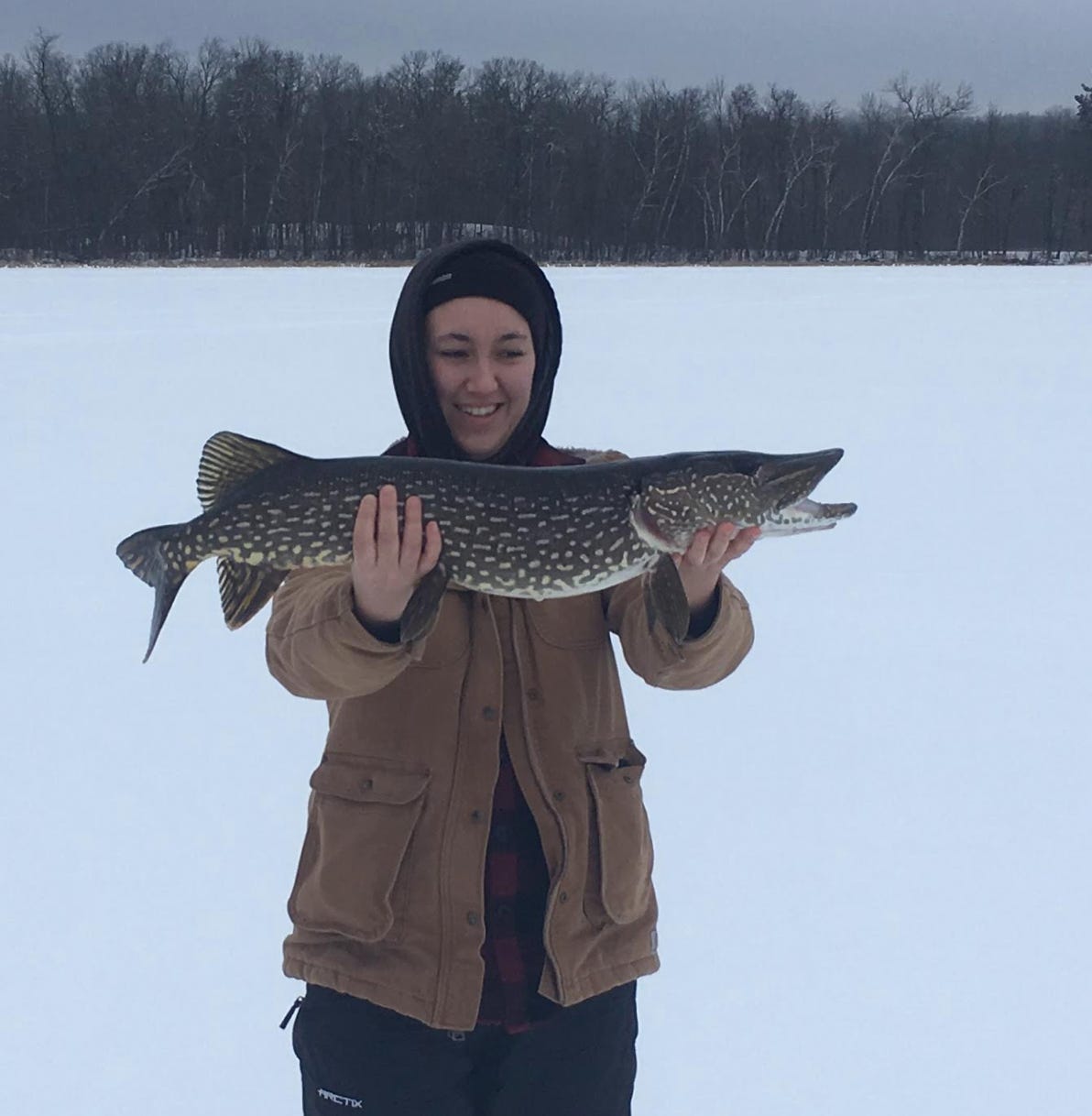
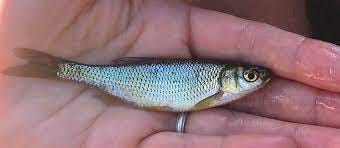
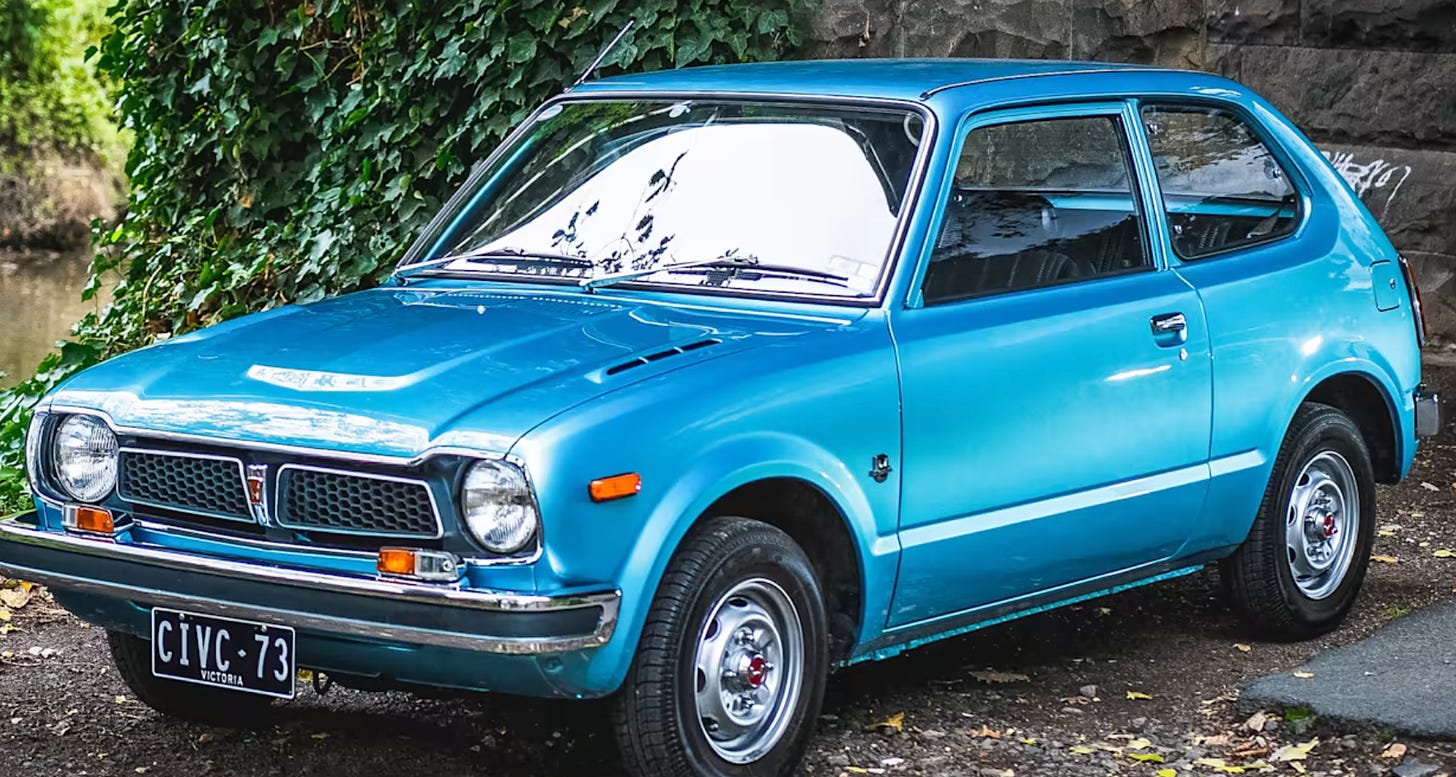

I thought we were heading to a conclusion that Sven failed on the walleye but he did get a crappie.
There is an uninhabited island on Lake Courte Oreielles near Hayward now forever known as "Sock Island" after my dad forgot to pack the TP for the boat and he returned barefoot from an emergency stop some years ago.
Love the fishing tales.